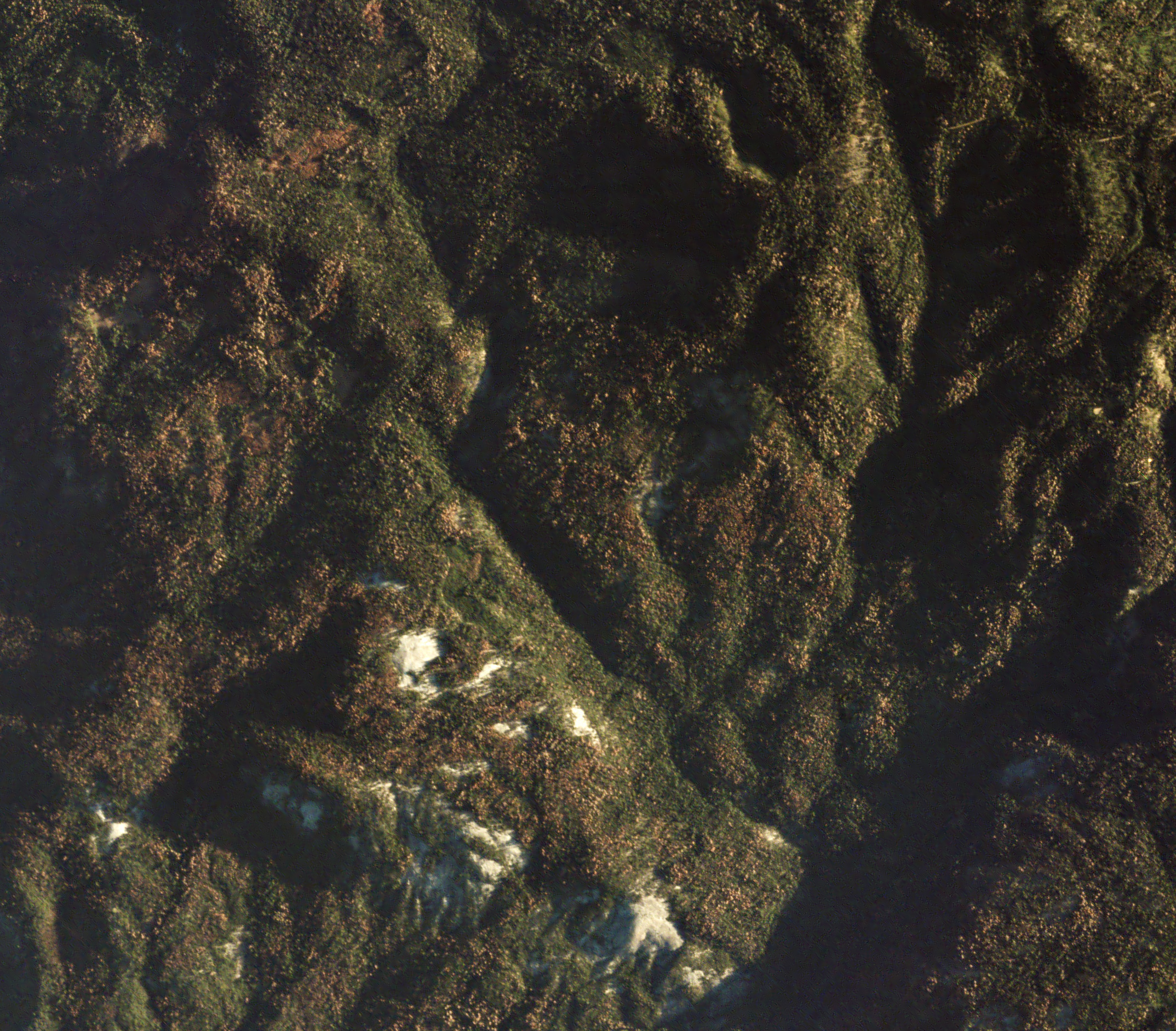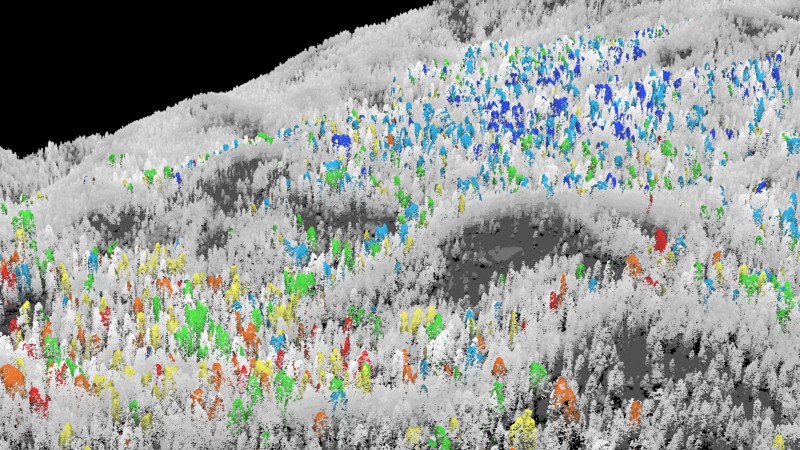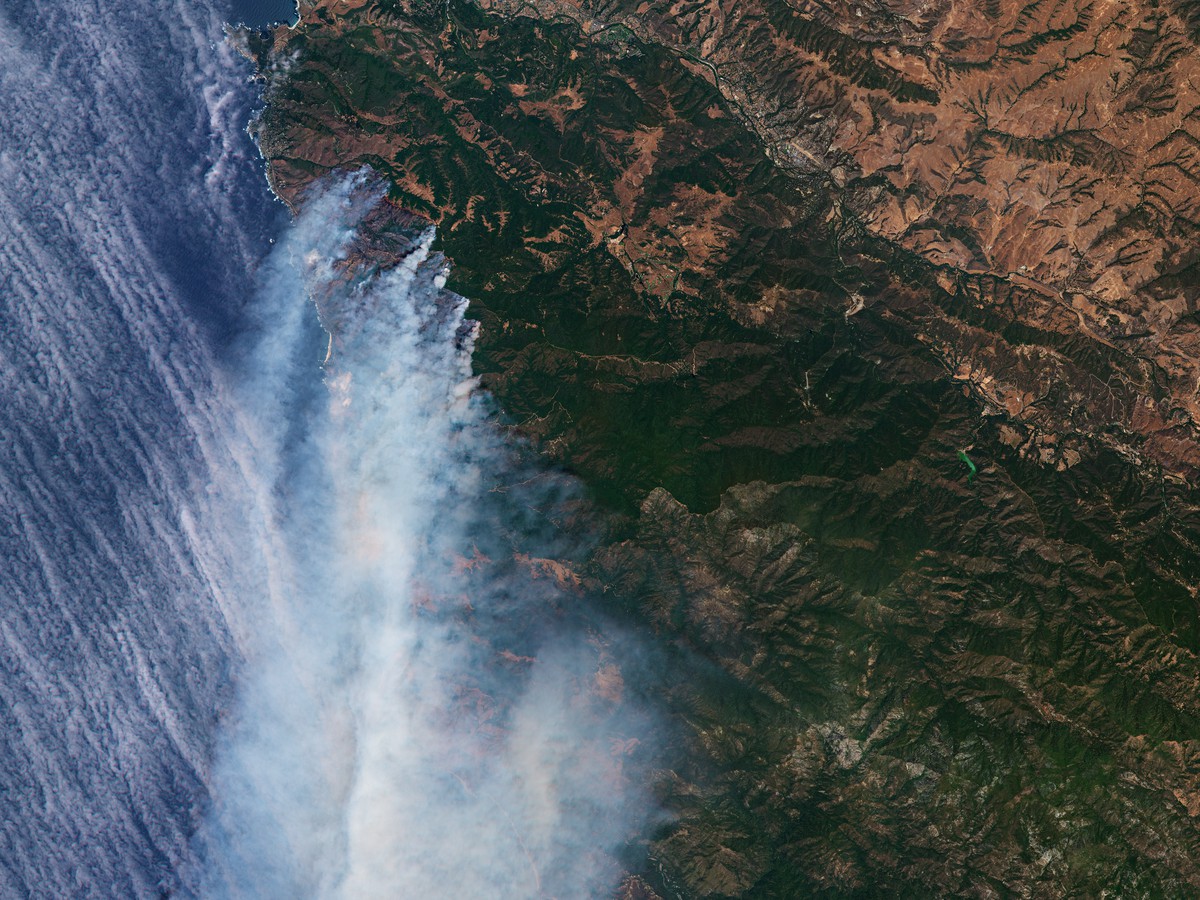Planet Observes Unprecedented Tree Die-off in California
Rich oranges, deep reds and bright yellows dot otherwise olive-colored forests. But the colors are not leaves of eastern hardwoods announcing the arrival of autumn. No, they’re the death throes of vast swaths of coniferous forests in the Sierra Nevada foothills.
From Yosemite all the way to Bakersfield, as many as 66 million trees—possibly more—are standing dead in California’s forests. The prolonged drought and other stressors have taken an unambiguous toll.
With Planet’s frequent data we can observe the devastation in real time:

In this true-color satellite image, brown trees signal widespread Conifer die-off in the Eastern Sierras near Central Camp, California

Multi-dimensional data form Carnegie Airborne highlights drought stress among Giant Sequoias. Blue trees are getting water, but those shown in yellow, orange and red are increasingly drought-stressed. Greg Asner/Carnegie Institution for Science.
The results are staggering. The US Forest Service estimates that 26 million trees have died just over the last eight months, due to a combination of drought and beetle infestation. They further believe that at least two years of normal rainfall are now needed to stabilize those trees that have so far managed to survive.
In the meantime, much of the Sierras are at great risk of fire, as dead wood, snags and other debris accumulates. The die-off exacerbates the statewide fire risk, which has recently afflicted California’s coastal areas.

The Soberanes Fire has spread through Monterey County, consuming over 19,000 acres of forestland. In this July 23, 2016 RapidEye image, the fire was less than five percent contained.
Planet is doing what it can to help us learn more about the situation, and take action. Through its Open Regions program, Planet has made its data on forests of the Sierras, and the rest of the state, open for those that wish to enroll. We encourage developers with innovative ideas for tracking tree mortality to sign up, and explore our deep dataset.
Through our Ambassadors Program, we’ve also partnered with Greg Asner’s team at the Carnegie Airborne Observatory to help scale up their high-resolution airborne analyses. If you are a researcher interested in becoming a Planet Ambassador, and joining the fight to save California’s forests, please apply here.
